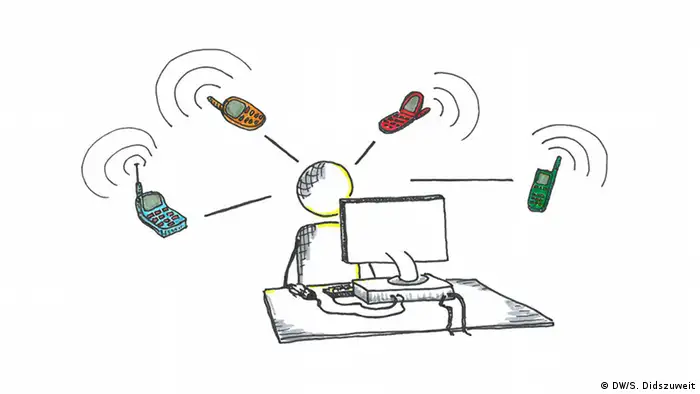In focus
Reaching your audience
Can mobile phones be an efficient advocacy and accountability tool? Mera Swasthya Meri Aawaz, a maternal health and women’s rights project in India, has tried it out.
In Northern India, the most disadvantaged are hardest hit by corruption in maternal health clinics: poor, mostly uneducated women from small rural villages or urban slums. The project, Mera Swasthya Meri Aawaz (My Health, My Voice) wanted to use digital technologies to give them a voice, fostering participation for the marginalized. But how do you communicate digitally with people who are not able to read or write? The project found simple mobile phones to be the technology of choice.
As part of the Mera Swasthya Meri Aawaz project, women can call a toll free number and leave reports about incidents of being charged for maternal services. The automated service has been kept as simple as possible: women are asked to dial “1” to stipulate where they had to pay a bribe, “2” what service they had to pay for and “3” for the amount paid. The reports are anonymous. After all, the women have to continue visiting their clinics and hospitals. They are also not asked to personally name those involved.
Choosing the technological approach
The project uses an Ushahidi platform to instantly update the reports from victims of corruption. However, the original Ushahidi platform operates with SMS – a system too complicated for the targeted users. “To send an SMS you have to be literate,” says Yatirajula Kanaka Sandhya, the manager of the project and the assistant coordinator of the umbrella NGO Sahayog. This is why Mera Swasthya Meri Aawaz switched to the automated voice system and offered the service in a local dialect.
Mera Swasthya Meri Aawaz’s experience highlights the importance of working closely with the user groups within a project to ensure that the best technology is being used to reach them. The project carried out many test runs before completing the design of the system. Nevertheless, they still encountered some initial issues. “Our women are not educated. So for them to punch out a 10 digit toll-free number was not easy or straightforward,” explains Sandhya. The project trained literate women in the villages to help their neighbors. “Many meetings with women in the communities involved followed,” she added. “We have shown them the Ushahidi map, so they understand that when they make a complaint, it goes on the map.”
For Mera Swasthya Meri Aawaz, collecting the information is only the first step. The project and Sahayog work to fight corruption in the health care system. Using information communication technology (ICT) has strengthened their advocacy work, says Sandhya. In her experience information collected from the field by ICT has a much higher impact than when they use individual experiences. “Case studies are very often dismissed by government officials as anecdotal information. They feel like these are just stories, or just one or two stories. But the moment you use ICTs, technology has a power of its own.” In her experience, government officials tend to consider reports made with ICTs to be more genuine. “We have never had any situation where they have questioned the legitimacy of the data collected through the telephone line.”
Using the information gathered
Mera Swasthya Meri Aawaz has raised new questions on how to use the data collected. Advocating for corruption free maternal health care, the organization is often asked to have the perpetrators named as part of the reporting process by the government. For Sandhya, this is an ethical conflict. “If the people are named, it will be easy to track down who made the complaint and then there will be a backlash.” This would simply ruin the project and the women will continue to have to deal with the problem,” she fears. “We don’t want to put them in a situation where the vulnerability of the women increases.”
Anyway, going after specific people will not solve the problem in the view of Sandhya and her team. She says the system that facilitates these activities needs to change. “We don’t believe that punishing one or two people will cause a change. We need systemic changes. Punishing errant doctors will not solve the problem.”
Setting up the Ushahidi platform and tailoring it to the needs of their target group helped the organization move from having anecdotal data to having data which the government feels is hard data. “It is on a map, you can physically see it online. That makes a lot of difference. That is the additional power or leverage that this particular helpline has given,” says Sandhya.
DW recommends
WWW links
- Date 15.03.2016
- Author Roslyn Kratochvil Moore
- Feedback: Send us an e-mail. Please include your name and country in your reply.
- Print Print this page
- Permalink https://p.dw.com/p/1ID1z
- Date 15.03.2016
- Author Roslyn Kratochvil Moore
- Send us your feedback.
- Print Print this page
- Permalink https://p.dw.com/p/1ID1z

